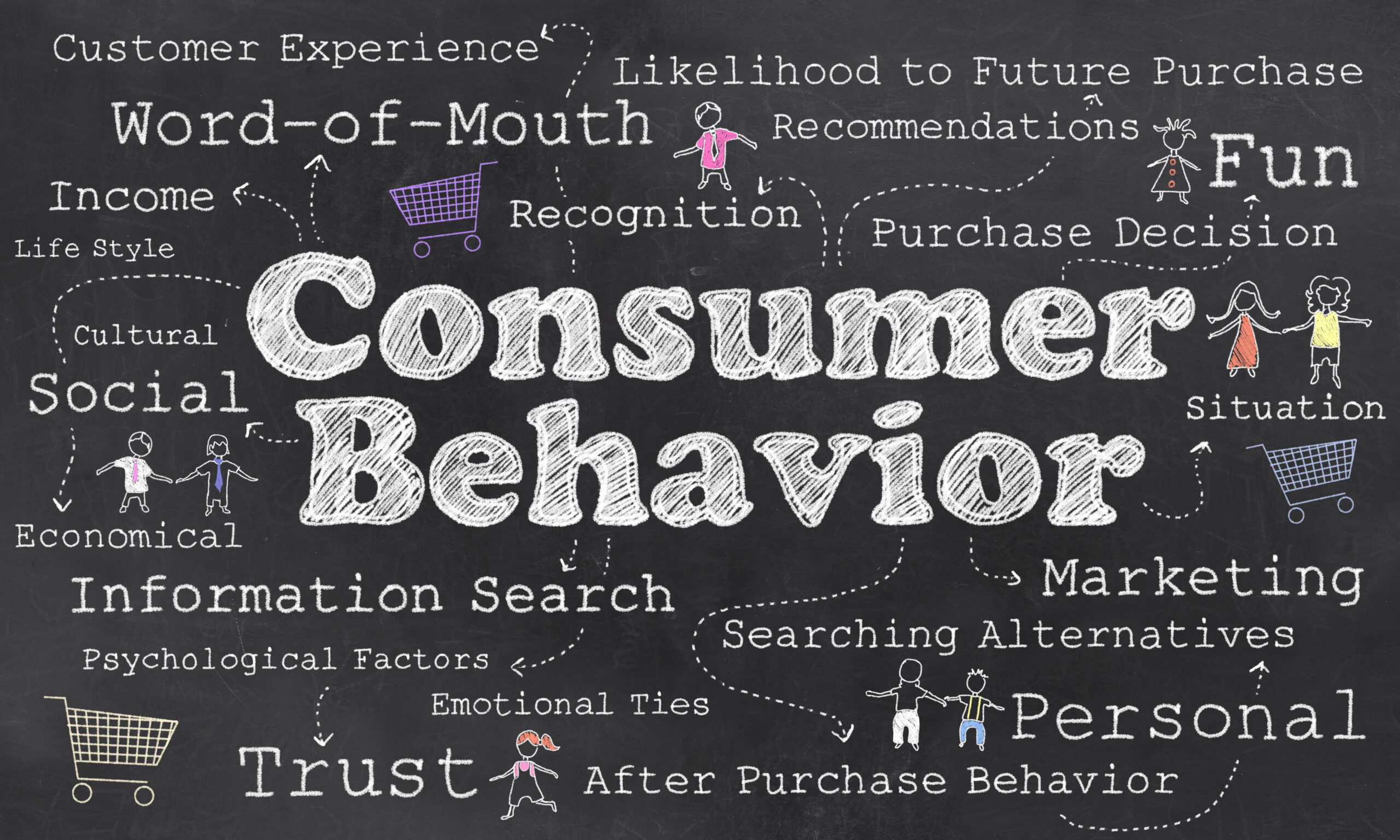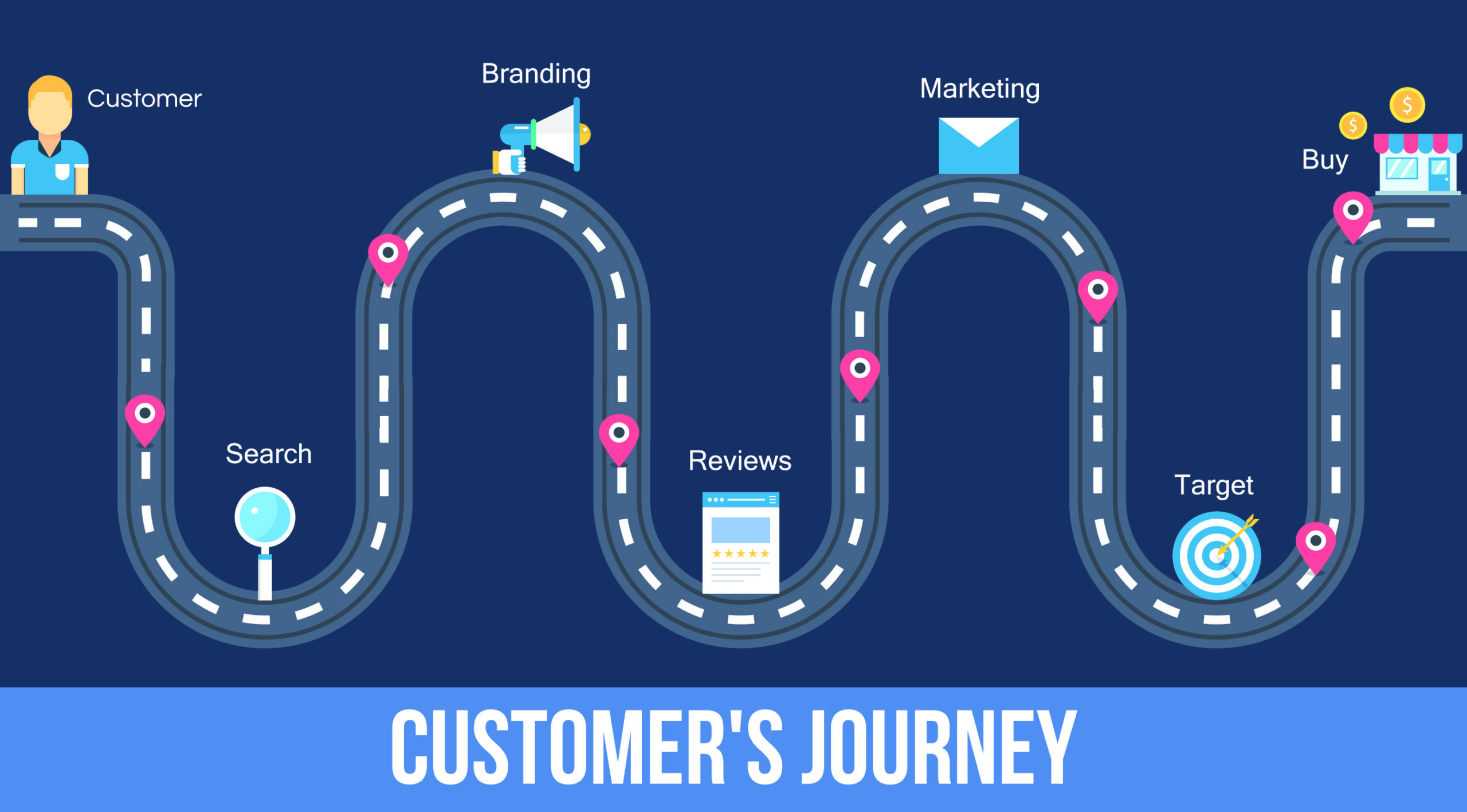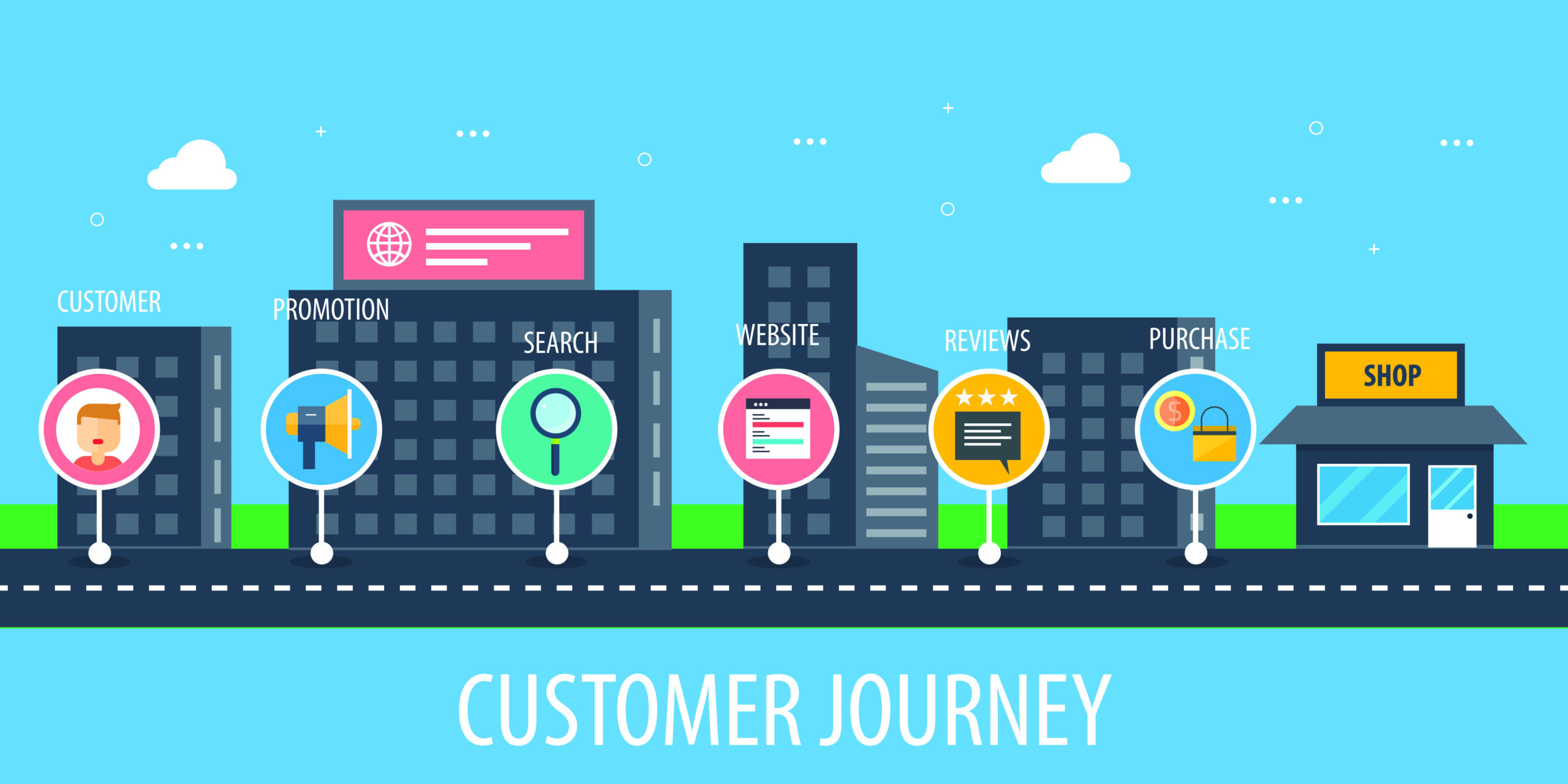
Navigating the Evolution of Consumer Behavior
The digital age has significantly transformed consumer behavior, ushering in a new era where agility and innovation are advantageous and essential for startups aiming to carve out their space in a competitive marketplace.
Stand at the forefront of this transformation, guiding businesses through the complexities of digital engagement with a deep understanding of consumer behavior and the innovative application of artificial intelligence (AI).
The Evolution of Digital Consumer Engagement
It has been a transformative journey marked by rapid technological advancements and shifting consumer expectations. From the early days of the internet to the current era of artificial intelligence and big data, the landscape of consumer interaction has undergone profound changes.
The Dawn of the Digital Age
The digital age began with the advent of the internet, fundamentally altering how consumers accessed information and interacted with brands. Websites and email marketing became new frontiers for businesses, offering unprecedented reach and the ability to connect with consumers globally. This period laid the groundwork for the interactive and data-driven strategies that define today’s digital consumer engagement.
The Rise of Social Media
The emergence of social media platforms revolutionized consumer engagement, transforming it from a one-way broadcast to a dynamic two-way conversation. Brands could now engage directly with their audience, receiving instant feedback and fostering a sense of community. This era also saw the rise of influencers who could sway public opinion and consumer behavior through their online presence.
Personalization and Data Analytics
The explosion of data analytics tools gave businesses insights into consumer behavior like never before. Personalization became the cornerstone of digital consumer engagement, with companies tailoring their content, recommendations, and advertising to their users’ preferences and behaviors. This shift towards personalized experiences underscored the importance of understanding the consumer.
Mobile Revolution and App Economy
The widespread adoption of smartphones and the app economy further changed the landscape, making digital engagement more immediate and accessible. Consumers now can interact with brands anytime, anywhere, through their mobile devices. This widespread use of smartphones also led to the development of location-based services, allowing for even more personalized and contextually relevant engagements.
The Integration of AI and Machine Learning
The latest phase in the evolution of digital consumer engagement is marked by integrating artificial intelligence (AI) and machine learning. These technologies have enabled more sophisticated personalization, predictive analytics, and automated customer service through chatbots. AI has made interactions more efficient and human-like, providing consumers with highly relevant and engaging experiences.
The Future: Immersive Technologies and Beyond
Looking ahead, emerging technologies like augmented reality (AR), virtual reality (VR), and the Internet of Things (IoT) are set to redefine digital consumer engagement once again. These technologies promise to create more immersive and interactive experiences, blurring the lines between the digital and physical worlds. As we progress, businesses’ continuous innovation and adaptation to these evolving technologies will be crucial in staying connected with the ever-changing digital consumer.

Strategies for Decoding Digital Behavior
Understanding and engaging with consumers in the digital age requires a comprehensive strategy that encompasses several key components:
Social Listening and Analytics: Gain valuable insights into consumer preferences and sentiments by monitoring social media conversations and analyzing web traffic, allowing businesses to adapt their strategies in real time.
Customer-Centric Content: Creating content that addresses the target audience’s specific needs, interests, and challenges is essential—Excel in developing engaging content that resonates with consumers, driving engagement and conversions.
AI-Driven Personalization: Utilizing AI to tailor experiences is a game-changer. Employ AI to deliver personalized product recommendations, marketing messages, and support through chatbots, significantly enhancing the user experience.

Mastering Interactive Engagement and Trust
The evolution of the Internet has shifted consumer expectations, demanding innovative and personalized experiences, brand transparency, and trustworthiness. As businesses navigate this landscape, developing strategies for interactive engagement and fostering trust has become paramount.
The Importance of Interactive Engagement
Interactive engagement involves creating opportunities for consumers to participate actively in brand storytelling and dialogue. This two-way interaction can take many forms, from social media conversations and live chats to user-generated content and interactive polls. The goal is to transform passive consumers into active participants, enhancing their connection with the brand.
Critical Strategies for Interactive Engagement:
– Social Media Platforms: Utilize social media to create a community around your brand. Engage with followers through comments, direct messages, and interactive content such as polls and live videos.
– Content Personalization: Deliver content that resonates with your audience’s preferences and behaviors. Personalized content increases relevance and engagement, encouraging users to interact with your brand more deeply.
– Gamification: Incorporate elements of gaming into your marketing strategies. Challenges, rewards, and leaderboards can make the interaction with your brand fun and engaging, boosting consumer participation.
– User-Generated Content (UGC): Encourage your audience to create and share content related to your brand. UGC fosters community and authenticity, amplifying engagement through peer recommendations.
Building and Maintaining Trust
Trust is the foundation of consumer loyalty and brand success. Trust is built on transparency, reliability, and integrity; maintaining it requires a consistent and honest approach.
Approaches to Fostering Trust:
– Transparency in Data Usage: Communicate how you collect, use, and protect consumer data. Adhering to privacy laws and being transparent about your data practices reassures consumers about their privacy and security.
– Quality Content and Reliable Information: Ensure all content shared is accurate, informative, and valuable. High-quality content establishes your brand as a credible source of information.
– Responsive Customer Service: Provide timely and helpful responses to customer inquiries and feedback. A reliable customer service experience reinforces trust and shows that you value your customers.
– Authenticity in Brand Messaging: Be genuine in your marketing campaigns and communications. Authenticity resonates with consumers and builds emotional connections that foster trust.
– Social Proof: Showcase reviews, testimonials, and case studies to provide evidence of your brand’s reliability and the quality of your offerings. Social proof can significantly influence consumer trust and decision-making.
The Role of Technology in Trust Building
Technology is crucial in interactive engagement and trust building. AI and machine learning can enhance personalization and improve customer service through chatbots and personalized recommendations. Blockchain technology offers new ways to ensure transparency and security, particularly in transactions and data management.

The Omnichannel Approach: Seamless Across Platforms
This approach acknowledges that consumers today interact with brands through various online and offline channels and expect a unified experience regardless of where or how they engage. Implementing an omnichannel strategy is critical for businesses seeking to meet these evolving consumer expectations and foster deeper connections with their audience.
Understanding the Omnichannel Approach
At its core, the omnichannel approach integrates marketing, sales, and customer service strategies across all channels to deliver a consistent and personalized customer experience. Unlike multichannel strategies that may treat each platform as a separate entity, omnichannel ensures that all channels are interconnected, allowing for a fluid transition from one to another.
Benefits of an Omnichannel Strategy
– Enhanced Customer Experience: Businesses can significantly improve customer satisfaction and loyalty by providing a consistent experience across all channels. Consumers appreciate an integrated approach’s convenience and personalization, creating a more positive brand perception.
– Increased Engagement and Sales: A seamless omnichannel experience encourages more significant interaction with the brand. As consumers move effortlessly across channels, they are more likely to purchase and engage with content, driving up sales and conversion rates.
– Better Data Collection and Analysis: Integrating channels allows businesses to collect and analyze data across the customer journey. This comprehensive view of consumer behavior offers valuable insights for targeted marketing strategies, product development, and customer service improvements.
– Competitive Advantage: An effective omnichannel strategy can set a brand apart. In a marketplace where consumers have endless options, the ability to offer a cohesive and customer-centric experience can be a crucial differentiator.
Implementing an Omnichannel Strategy
– Understand Your Customer’s Journey: Map out the various paths customers take to interact with your brand, from discovery through purchase to post-purchase support. Understanding these pathways is crucial for creating a seamless experience.
– Leverage Technology: Invest in technology platforms that support omnichannel integration, such as Customer Relationship Management (CRM) systems, content management systems (CMS), and data analytics tools. These technologies can help synchronize customer interactions and preferences across channels.
– Align Your Organization: Omnichannel implementation requires coordination across various departments, including marketing, sales, customer service, and IT. Ensure that all teams are aligned with the omnichannel vision and understand their role in delivering a cohesive customer experience.
– Personalize the Experience: Use the data gathered from various touchpoints to personalize interactions based on customer preferences, history, and behavior. Personalization can significantly enhance the customer experience and foster loyalty.
– Continuously Optimize: The digital landscape and consumer behaviors constantly evolve. Regularly assess and refine your omnichannel strategy based on customer feedback, data analytics, and market trends to stay relevant and practical.
The Future of Omnichannel
As technology continues to advance, the possibilities for omnichannel engagement will expand, incorporating emerging tools like augmented reality (AR), virtual reality (VR), and the Internet of Things (IoT). These technologies offer new ways to engage customers and deeply integrate physical and digital experiences.

Why Staying Up-to-Date Is Critical for Startups
Staying up-to-date with the latest trends, technologies, and consumer behaviors is critical for startups for several compelling reasons. In an ever-evolving digital landscape, the ability to adapt and innovate can be the difference between success and obsolescence. Here are the key reasons why maintaining relevancy by staying informed is essential for startups:
Rapid Technological Advancements
The pace at which technology evolves is staggering. New tools, platforms, and technologies emerge constantly, offering startups new opportunities to enhance their operations, marketing, product development, and customer service. Staying abreast of these advancements allows startups to leverage them for competitive advantage, streamline their processes, and offer innovative solutions that meet the modern consumer’s expectations.
Shifting Consumer Expectations
Consumer preferences and expectations are not static; they change as new technologies and trends emerge. What was innovative yesterday may become the standard tomorrow. Startups need to understand these shifting expectations to meet and exceed them continually. Please do so to avoid disconnecting from the target audience and diminishing brand relevance and loyalty.
The Competitive Landscape
The startup ecosystem is incredibly competitive, with numerous companies vying for attention within the same niches. Keeping updated with industry trends, competitor movements, and market dynamics is crucial for startups to identify unique value propositions, differentiate themselves, and stay ahead of the competition.
Market Responsiveness
Startups that are well-informed about the latest trends and technologies can respond more swiftly to market changes. This agility enables them to pivot their strategies, explore new market opportunities, or address emerging challenges before they become critical threats. In this context, being proactive rather than reactive can significantly impact a startup’s growth trajectory and sustainability.
Fostering Innovation
Innovation is at the heart of every successful startup. By staying updated with the latest developments, startups can inspire creativity and innovation within their teams. This continuous learning environment encourages the exploration of new ideas, experimentation with emerging technologies, and the development of groundbreaking products and services that can disrupt markets.
Building Credibility and Thought Leadership
Startups knowledgeable about their industry and the broader digital landscape can position themselves as thought leaders. Sharing insights, trends, and forward-thinking perspectives through blogs, social media, and speaking engagements builds credibility and enhances brand visibility and authority in the field.
Attracting Investment
Investors are likely to back startups demonstrating an understanding of the current market and its future direction. Staying informed and articulating how your startup is positioned to capitalize on emerging trends and technologies can make your company more attractive to potential partners.
Transforming Visions into Reality: Digital Mastery with MRKT360
In the fast-paced and ever-evolving digital landscape, understanding and adapting to the dynamic patterns of consumer behavior and technological advancements is paramount for businesses aiming to thrive. The journey through the digital age is intricate, requiring a blend of innovation, strategic insight, and a deep understanding of the digital consumer.
MRKT360 stands at the forefront of this journey, combining its digital marketing and consumer behavior analysis expertise to craft strategies that resonate with your target audience and drive meaningful engagement and conversions.
By partnering with MRKT360, you ensure that your business navigates the complexities of the digital world and emerges as a leader, setting new benchmarks for success in the digital marketplace.
Seize the opportunity to redefine your digital narrative and elevate your online presence with MRKT360, where cutting-edge strategies and consumer insights converge to create unparalleled digital experiences.
Contact MRKT360 today and begin your transformative journey towards digital excellence.



Sorry, the comment form is closed at this time.